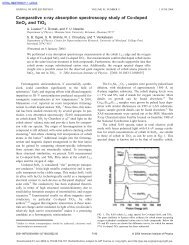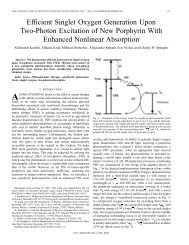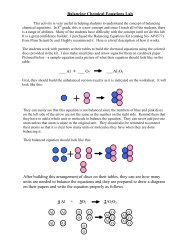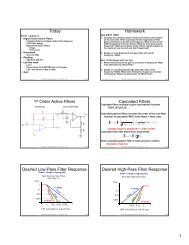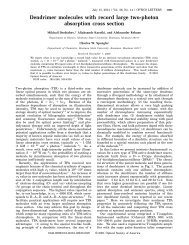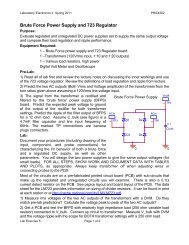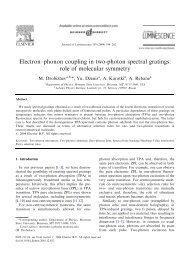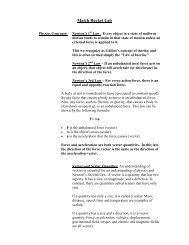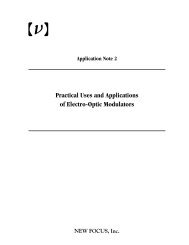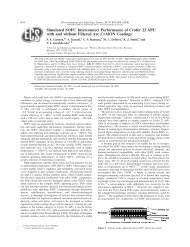Defects in inorganic photorefractive materials and their investigations
Defects in inorganic photorefractive materials and their investigations
Defects in inorganic photorefractive materials and their investigations
Create successful ePaper yourself
Turn your PDF publications into a flip-book with our unique Google optimized e-Paper software.
<strong>Defects</strong> <strong>in</strong> <strong>in</strong>organic <strong>photorefractive</strong> <strong>materials</strong> <strong>and</strong> <strong>their</strong> <strong>in</strong>vestigations 7<br />
the last one the hyperf<strong>in</strong>e <strong>in</strong>teraction. Here µ B is the Bohr magneton, B the<br />
external magnetic field vector, g the tensor of the Zeeman <strong>in</strong>teraction, S the<br />
sp<strong>in</strong> operator (2S + 1 is the multiplicity of the lowest level considered), D a<br />
crystal field tensor, I i the sp<strong>in</strong> operator of nucleus i <strong>and</strong> A i the tensor of the<br />
hyperf<strong>in</strong>e <strong>in</strong>teraction. The Hamiltonian usually operates only on the (2S +1)<br />
lowest states <strong>and</strong> is thus called a sp<strong>in</strong>-Hamiltonian.<br />
Fig. 4. Basic schemes for paramagnetic resonance <strong>and</strong> related methods, demonstrated<br />
for one electron sp<strong>in</strong>, S = 1 . 2<br />
EPR: One transition occurs between the m s = ± 1 states, Zeeman - split by a static<br />
2<br />
magnetic field B. Obta<strong>in</strong>ed <strong>in</strong>formation: magnitude <strong>and</strong> angular dependence (symmetry)<br />
of splitt<strong>in</strong>g factor g <strong>and</strong> value of crystal field (for S> 1 only). In general:<br />
2<br />
sp<strong>in</strong> value S, related to defect charge state.<br />
ENDOR: If the electron <strong>in</strong>teracts with one nucleus, assumed to have nuclear sp<strong>in</strong><br />
I = 1 , the <strong>in</strong>dicated additional nuclear splitt<strong>in</strong>gs occur. The double arrow nuclear<br />
2<br />
transitions are detected by changes of the EPR signals (wavy arrows). Information:<br />
nuclear sp<strong>in</strong>(s), nuclear splitt<strong>in</strong>g factor g n <strong>and</strong> the magnitude <strong>and</strong> angular dependence<br />
of the hyperf<strong>in</strong>e <strong>in</strong>teraction.<br />
ODMR via MCD: Optical excitations with left- <strong>and</strong> right-circular polarized light<br />
orig<strong>in</strong>ate from different Zeeman-EPR sublevels, as shown. The EPR transition (wavy<br />
arrow) decreases the population difference of these sublevels. The EPR is detected<br />
by the change of the MCD signal, ∆α = α + − α −. Information: EPR parameters<br />
<strong>and</strong> the optical absorption b<strong>and</strong>s orig<strong>in</strong>at<strong>in</strong>g from the ground state Zeeman levels.<br />
The energy splitt<strong>in</strong>gs described by a Hamiltonian of this type are generally<br />
monitored by unbalanc<strong>in</strong>g a microwave bridge circuit when the supplied<br />
microwave energy matches the energy splitt<strong>in</strong>gs, i.e. when the resonance condition<br />
is fulfilled (Fig. 4). Because the population difference of the levels, ∆n,<br />
behaves as<br />
∆n = tanh(µ B gB/2kT), (2)





